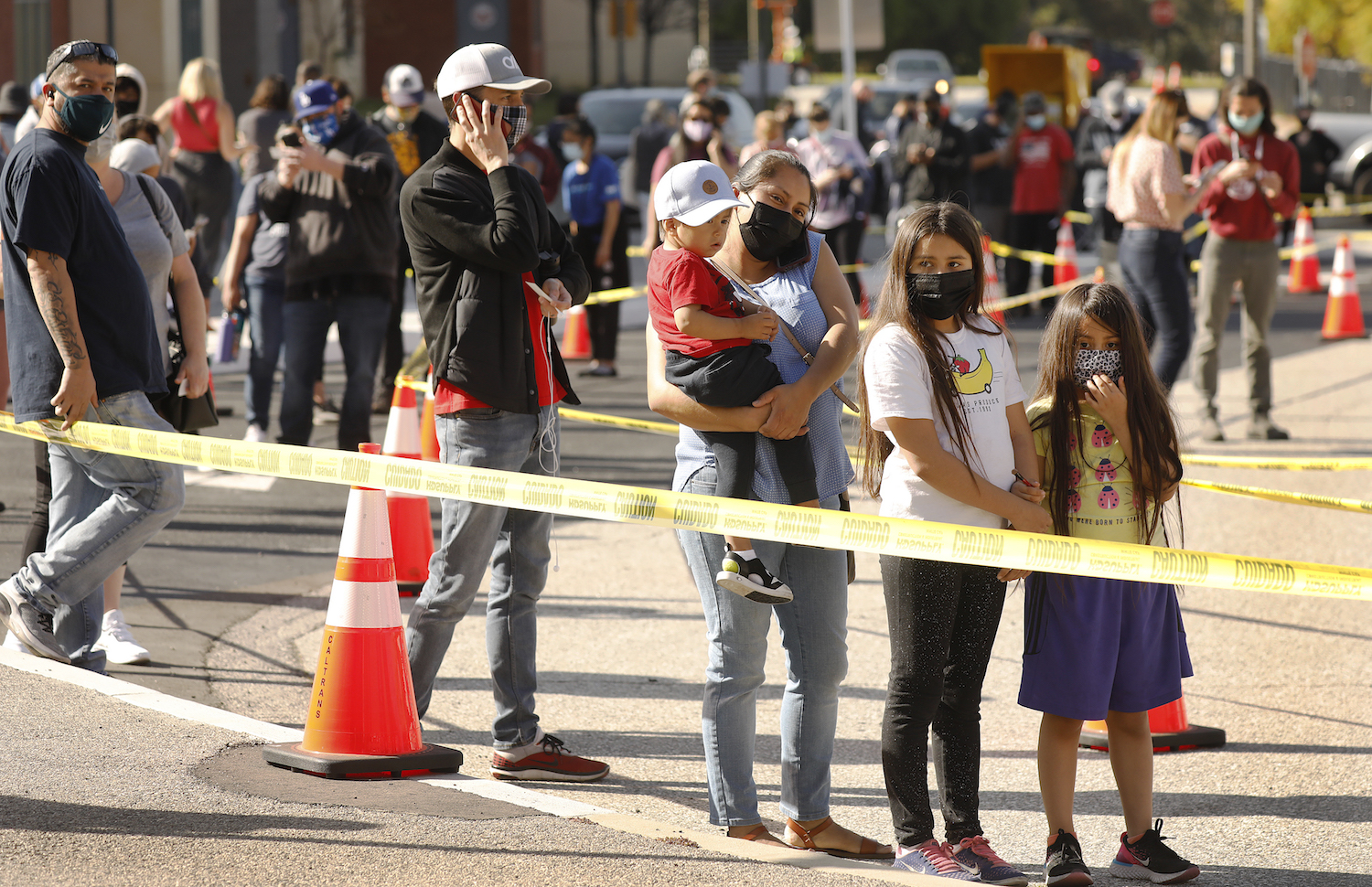
The COVID-19 conspiracy theories targeting Latinos must be fought from within
MORE IN THIS SECTION
If you’re a Latino in the U.S., chances are you know a fellow Latino that is wary of taking the COVID-19 vaccine.
Since the pandemic began, Latinos have been hard-hit by a barrage of false claims and misinformation campaigns on social media. Deceptive content is running rampant on Spanish-language websites, but so far because of lack of investment, moderation hasn’t been made a priority within these platforms.
In the end, this may be a situation Latinos have to collectively take upon ourselves to educate from within. Because the “infodemic,” as it’s been deemed by the CDC, only continues to take more lives.
Latinos across the U.S. continue to be the most-affected demographic, followed closely by Black Americans. Data for Indigenous communities is incomplete, and is most likely higher than the few projections currently available.
It didn’t need to be this way, but the few outreach campaigns by and large haven’t worked.
This isn’t in reference to digital campaigns specifically focused on Facebook, Youtube, and Twitter’s lack of moderation on Spanish Language sites. Those initiatives are battling the source of the disinformation by combating the very platforms that allow them to spread as they are.
We’re talking about the damage that has already been done. How to convince a mother, father, or tío or tía that the latest “hack” on how to cure yourself from the virus is bogus, or that the latest conspiracy theory circulating about the vaccine isn’t credible.
It’s going to be difficult, but education starts at home, among family members and close Latino peers. Sometimes, it is a case of someone being afraid of the vaccine because of unknown risks. Other times it runs deeper: To conspiracies ranging from the pandemic being an affront to liberties, or that the vaccine was manufactured to control the public.
Especially among Latino communities, religion also comes into play.
This probably sounds silly to a lot of people, but it’s a bad move to proceed with judgement. They’ll never listen.
First, it’s important to understand where these fears come from; to understand your loved one in question. Is it a form of generational trauma from the medical practices of the past, or have they become radicalized by the media they consume?
A portion of the slow vaccine rollout among Black and Latinx people stems from the distrust within the medical system, which has a history of racist practices that has deterred these demographics from seeking medical care in the past.
The critical part, aside from the historical implications that are still in recent memory for these communities, is that a lot of the misinformation circulating is rooted in truth.
There are a handful of disinformation and misinformation campaigns occurring across the nation, like Basta Ya Facebook. But apart from advocating for the companies themselves to moderate Spanish content, and outreach conducted by local governments and municipalities, the effort to communicate the vaccine to BIPOC communities has largely failed.
How do we know this? The data speaks for itself.
Vaccine equity has been hailed on the nationwide level in recent days, from the feat of reaching 100 million fully-vaccinated people, to increasing outreach. However, the demographic data on who has gotten shots is incomplete, reports NBC News.
They reference a recent analysis by the Kaiser Family Foundation that suggests that those BIPOC communities hardest-hit are still trailing in getting vaccinated.
The Biden administration has touted an equitable COVID-19 vaccine distribution process, but on the nationwide level, the execution isn’t there.
This work is often the work of leaders of smaller municipalities, who deal with the issue at their own pace, level of importance, and strategy. Sometimes a grassroots level of increasing awareness is effective, but the case of the Black Doctor’s COVID-19 Consortium in Philadelphia is seldom witnessed or funded.
In early April, the Biden administration announced a new initiative to combat vaccine hesitancy through grassroots leaders.
"In some communities — some of our hardest-hit communities — it's too hard to access the vaccine or get information about it. And we have to be honest about that. We certainly are," Vice President Kamala Harris said at the event.
It was a positive step, but it came months after the bulk of the damage had been done. Already, vaccination rates are slowing among these underserved communities, and they don’t have time to stand around for a government-funded initiative to reach them.
Such is the argument in favor of advocating from within, and understanding the perspective that many wary Latinos hold regarding the COVID-19 vaccine.
RELATED CONTENT
This is a different story from the traditional American “Anti-Vaxxer,” who believes their rights are being taken away from them, and that the pandemic gave way to increased levels of liberal overreach. These people continue to travel, eat out, and have been living pretty normal lives despite the use of masks and reduced capacities.
That is not to say that there aren’t conservative Latinos who fall within this space, but the overall issue with Latinos is different.
They stay at home, they wear masks, and are by and large in the “essential” worker category, thereby exposed to higher risk. This year has contained a lot of fear, and Latinos have been navigating and surviving.
So of course, after a year of being on the front lines, avoiding the virus and pandemic by our own means, the vaccine rollout was met with a lot of questions. Latinos know the risk of infection, but because of fear and uncertainty regarding the vaccine, they are continuing to live high-risk lives because it’s what they know.
This is the issue: From the get-go, the initiative to expel myths and conspiracies, or even to communicate the basic principles of the vaccine, weren’t prioritized.
The vaccine rollout wasn’t equitable because vaccination sites were largely set up in big, populated hubs and municipalities saved underserved areas for later.
There are very few national organizations that meet the people where they live and have vaccines administered by people in the community. Without the necessary trust in the process, people are going to find alternate sources to rest their fears, and this is exactly what’s happening.
Many trust their immune system to protect them, effectively trusting their bodies more than they trust the government administering the vaccine, or the vaccine itself.
Many also worry about long-term side effects, as there is nothing to protect them from adverse side effects.
Religion also plays a significant role in vaccine hesitancy among Latinos, who are predominantly Catholic or Protestant in the U.S. The religious space comes with its own brand of conspiracies, The Washington Post reports.
The Pew Research Center estimates that across the country, 28% of Latino and Hispanics say they definitely or probably will not get the vaccine. The number increases to 33% for those identifying as Protestant.
There is not one single reason why Latinos are hesitant to the COVID-19 vaccine. Some myths are specific to Latinos, and others have been circulated by the general public. In any case, it’s vital to have some sort of knowledge of the reasons why a particular person or group of people are waiting, or are explicitly against the vaccine.
As Jean Guerrero writes for the LA Times: “Our hard-earned skepticism can be an asset,” but at a time like this, it’s costing us lives.
With government entities struggling to catch up and understand our hesitancies, in the meantime, it’s up to those of us with a grasp on both sides to advocate and educate from within.







LEAVE A COMMENT:
Join the discussion! Leave a comment.